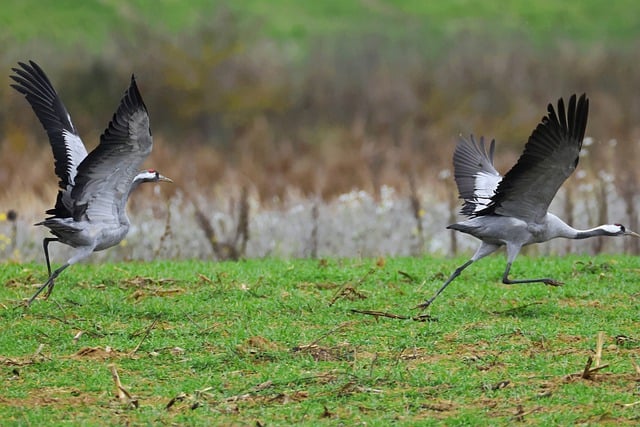Migration is one of the most fascinating phenomena in the animal kingdom. Every year, countless species embark on perilous journeys, traveling vast distances to find food, breed, or escape harsh seasonal changes. While scientists have unraveled many of the reasons why animals migrate, the mechanisms behind this behavior remain enshrouded in mystery. Let’s delve deep into the world of animal migration to uncover some of its secrets.
1. Why Do Animals Migrate?
The driving forces behind animal migration are as varied as the species that undertake these journeys. Here are some primary reasons:
- Food and Resources: Many animals move to areas rich in food, especially if their current habitat becomes scarce in resources due to seasonal changes.
- Breeding: Some species migrate to specific breeding grounds, often returning to the exact place they were born.
- Climatic Conditions: To escape extreme weather conditions, several species move to more hospitable areas.
2. The Marvels of Navigation
One of the biggest mysteries surrounding migration is how animals know where to go, especially when their destinations are thousands of miles away.
Internal Compasses and Maps
Many birds possess an internal compass, which they use to navigate. This compass is influenced by:
- Earth’s Magnetic Field: Certain species have magnetite (a magnetic mineral) in their beaks or brains, allowing them to sense Earth’s magnetic field.
- Polarized Light: Some birds can see polarized light patterns in the sky, which helps determine the sun’s position even on cloudy days.
Landmarks and Memory
Larger animals, like elephants and wildebeests, often use physical landmarks—rivers, mountains, valleys—to guide their way. Over time, migration paths become ingrained in a species’ collective memory.
Celestial Cues
Stars, the moon, and the position of the setting sun are celestial cues used by various species, including some birds and insects like the monarch butterfly.
3. Notable Migrators and Their Incredible Journeys

The Arctic Tern
This bird holds the record for the longest migration journey, covering a staggering 25,000 miles from the Arctic to the Antarctic and back again.
Monarch Butterflies
These colorful insects travel up to 3,000 miles from North America to central Mexico—a remarkable feat for such delicate creatures.
Gray Whales
Undertaking one of the longest migrations of any mammal, gray whales travel up to 12,000 miles round trip between feeding and breeding grounds.
Caribou
The caribou of North America have the most extended terrestrial migration, covering a distance of about 3,000 miles annually.
4. Challenges Faced During Migration
Migration is not without its risks and challenges:
- Predation: Migrating animals often fall prey to various predators during their journey.
- Human-made Barriers: Dams, highways, and tall buildings can pose significant challenges. Birds often collide with buildings, leading to substantial mortality rates.
- Starvation: If the journey is particularly long, some animals might not find enough food en route.
- Changing Climate: Global warming and its effects are altering migration timings and destinations for various species.
5. The Science Behind Tracking Migration
Modern technology has made it easier to understand and track migration patterns. Here are some methods:
- Satellite Tags: Attached to larger animals like whales and polar bears, these tags transmit data about an animal’s location.
- Leg Bands & Rings: Used primarily for birds, these can help in understanding their migration routes when they’re recaptured.
- Acoustic Tags: These emit sounds detected by a network of underwater receivers, often used for fish.
- Geo-locators: These are lightweight devices used for birds that record light levels, allowing scientists to estimate latitude and longitude.
6. Conservation and the Future of Migration
Changing ecosystems and human activities have impacted migration patterns, making conservation efforts crucial.
- Protected Corridors: Creating migration corridors free from human-made barriers can help animals migrate safely.
- Raising Awareness: Community awareness programs can reduce human-animal conflicts during migration periods.
- Climate Change Mitigation: Addressing the root causes of climate change can ensure that migration patterns and timings aren’t detrimentally altered.
Conclusion
Animal migration is a testament to the incredible endurance, memory, and adaptability of the animal kingdom. As we continue to unlock the mysteries behind these epic journeys, it’s our responsibility to ensure that these migrators have a safe passage for generations to come.
By understanding and respecting the intricacies of animal migration, we can co-exist harmoniously on this planet, preserving the awe-inspiring phenomena that occur in the natural world around us.


Leave a Reply